Introduction to the Necessity of Multilingual Website Design

In today’s world, where geographical boundaries have no meaning in the virtual space, an effective online presence has become more important than ever before.
For any business or organization that dreams of expanding its activities into global markets, multilingual website design is no longer a luxury choice, but rather a strategic necessity.
This approach allows you to communicate with your audience, regardless of their native language, and deliver your message to a larger number of people around the world.
#Educational #Explanatory.
The goal of this article is to provide a comprehensive and specialized guide for a deeper understanding of the various aspects of designing a multilingual website.
Imagine your website is only available in one language; this means you lose a significant portion of potential audiences who do not speak that language.
In the age of information, access to content in users’ native language is not just a privilege, but an expectation.
Monolingual websites often can only cover a small portion of the global target market, while multilingual website design removes this limitation.
This approach not only increases website traffic but also significantly helps improve conversion rates and enhance your brand’s international credibility.
The process of implementing such a system requires deep knowledge in technical, marketing, and even cultural fields to ensure that the user experience is optimized for each language.
One of the most important aspects of this path is understanding the subtle differences between mere translation and localization.
Localization goes beyond converting words from one language to another; it involves adapting content to the culture, values, and expectations of local audiences.
For example, colloquialisms, idioms, units of measurement, date formats, and even colors and images must be carefully chosen so that the message conveyed in the user’s native language is fully understood and resonates with them.
This complex process requires the collaboration of language specialists, marketers, and web developers to ensure that each version of the site serves its audience in the best possible way.
Investing in multilingual website design is an investment in your future and the expansion of your digital influence.
In the following sections, we will delve into the technical and strategic details of this path and provide practical solutions for creating a successful multilingual website.
Are you concerned about your e-commerce site’s low conversion rate and not achieving your desired sales?
RasaWeb is your specialized solution for having a successful e-commerce site.
✅ Significant increase in conversion rates and sales
✅ Professional and user-friendly design to attract customer satisfaction
⚡ Ready for a transformation in online sales? Get a free consultation!
Competitive Advantages and ROI of Multilingual Website Design

In today’s highly competitive global market, merely having an online presence is not enough; you need to effectively communicate with your audience.
Multilingual website design brings significant competitive advantages that can differentiate your organization from competitors.
#Analytical.
One of the most important advantages is access to new markets and a significant increase in market share.
When your website is available in multiple languages, you automatically open new doors to potential customers in various countries, which directly leads to increased sales and revenue.
Furthermore, a multilingual website helps strengthen your brand’s credibility and trust.
When customers find your content in their native language, they feel more comfortable and connected with your brand.
This personalized experience not only gains their trust but also shows that you value their needs and culture.
This approach builds more sustainable relationships with customers and ensures their long-term loyalty.
Multilingual website design is, in fact, an investment in customer experience that yields positive results for the brand.
From an Return on Investment (ROI) perspective, multilingual website design can be highly profitable.
While the initial investment for translation and localization may be substantial, its long-term benefits are far greater.
Increased organic traffic from search engines in different languages, reduced marketing costs for attracting new audiences, and improved conversion rates of users into customers all contribute to increased profitability.
This is a smart solution for sustainable global growth.
For example, companies that have made their websites multilingual have reported significant growth in their international traffic and revenue.
This evidence shows that investing in this area is a strategic and beneficial decision.
This section of the article provides an analytical view on the economic and competitive advantages that can serve as a strong motivation for businesses to enter this arena.
This step is crucial, especially for companies seeking to expand their global presence, helping them gain a larger share in new markets.
Ultimately, multilingual website design is not just a marketing tool, but a macro-strategy for sustainable business development on an international scale.
Technical Considerations in Multilingual Website Design
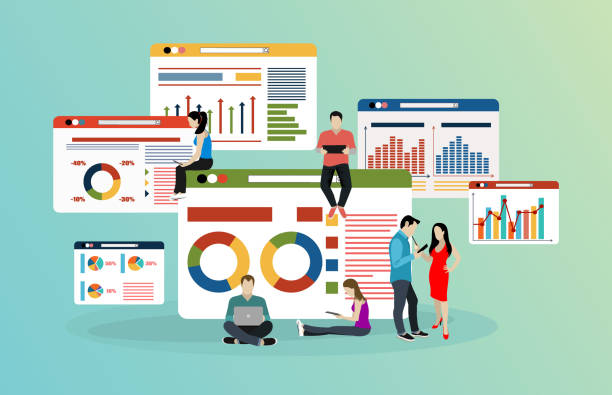
When it comes to multilingual website design, technical aspects play a vital role.
#Technical.
This section elaborates on the most important technical considerations that developers and project managers must pay attention to in order to create an efficient and search engine optimized multilingual website.
One of these aspects is the URL structure.
The correct choice between subdirectories (e.g., `yoursite.com/en/`, `yoursite.com/fa/`), subdomains (e.g., `en.yoursite.com`, `fa.yoursite.com`), or country-code top-level domains (e.g., `yoursite.co.uk`, `yoursite.de`) directly impacts SEO and user experience.
Each of these methods has its own advantages and disadvantages that must be chosen considering the project goals and resources.
For example, subdirectories are generally recommended for easier and more centralized management, while country-code top-level domains can send stronger geographical signals to search engines.
The next topic is the use of hreflang tags.
These tags help search engines determine the correct version of a page based on the user’s language and geographical region.
Without these tags, search engines might consider pages with similar content but in different languages as duplicate content, which can harm the site’s ranking.
Correct hreflang implementation is an essential step for optimizing international SEO.
Also, attention to the Content Management System (CMS) and its multilingual capabilities is very important.
Some CMSs like WordPress (with plugins such as WPML) or Drupal and Joomla offer strong built-in support for managing multilingual content, while others may require more complex customizations.
Choosing a suitable CMS that properly supports a multilingual structure can greatly facilitate the content management and update process.
Another issue to consider is database design.
The database should be designed to store and retrieve content for each language separately, without encountering performance issues.
This might involve creating separate tables for each language or using multilingual fields within one table.
Additionally, using a Content Delivery Network (CDN) can help improve website loading speed for users in different geographical regions, which is even more important for multilingual sites with a global audience.
These technical points are the cornerstone of a strong and sustainable multilingual website design.
| Translation Method | Advantages | Disadvantages | Best Application |
|---|---|---|---|
| Machine Translation (Automatic/AI) | High speed, low cost, suitable for large volumes of content | Low accuracy, disregard for culture and tone, requires human editing | Non-sensitive content, basic support, large data volume |
| Human Translation (Manual/Professional) | High accuracy, adherence to tone and culture, superior quality | High cost, time-consuming, requires language specialists | Marketing, legal, medical content, main websites |
| Hybrid Translation | Combination of speed and accuracy, reduced cost compared to purely human translation | Requires strong process management, finding the right balance | Medium projects, blog content, product descriptions |
Content Strategy and Localization
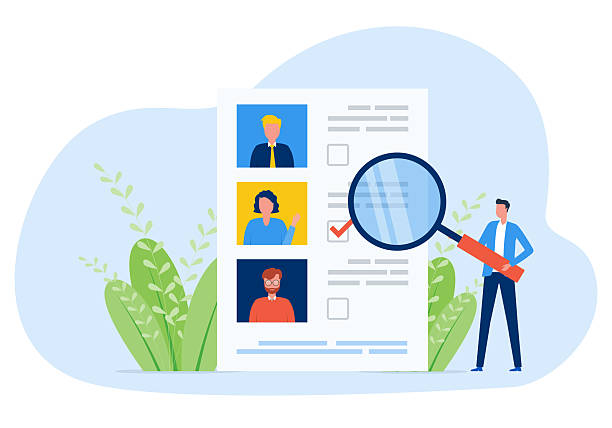
One of the most important pillars of successful multilingual website design is a strong and precise content strategy for each language.
#Guidance.
Localization goes beyond word-for-word translation; this process involves adapting content to the cultural nuances, local expressions, and even social sensitivities of the native audience.
The goal is for the content to make the audience feel that the website was designed for them and in their language from the outset.
This approach ensures that your message is conveyed correctly and establishes a deeper connection with the audience.
To begin, it is necessary to undertake a comprehensive content plan.
This plan should include keyword research for each language, as keywords popular in one language may not be very useful or may even have a different meaning in another language.
Furthermore, you need to decide which parts of the website require full translation and which sections might only need a summary of the content.
Engaging or entertaining content must also be adapted considering the local sense of humor and customs to prevent any misunderstandings.
For example, a joke that is common in Western culture might be meaningless or even offensive in Eastern culture.
Therefore, precise localization requires deep cultural understanding and attention to detail.
Another vital aspect is visual adaptation.
Images, videos, and even colors should be selected with the culture of each region in mind.
Some colors have a positive meaning in one culture, while they might be considered negative in another.
Additionally, date and time formats, units of measurement, and phone number and address formats must be localized for each language and region.
These small details can have a significant impact on user experience and assure the audience that your website is designed for their needs.
Remember that success in multilingual website design is not limited to text translation but depends on your ability to convey emotion and culture through content.
This comprehensive approach helps you connect with your audience worldwide and provide a flawless user experience.
Falling behind in competition with large online stores?
RasaWeb, with professional e-commerce website design, brings your business online and increases your market share!
✅ Increased brand credibility and customer trust
✅ Easy shopping experience leading to more sales
⚡ Act now to receive a free website design consultation!
Translation and Content Management Tools
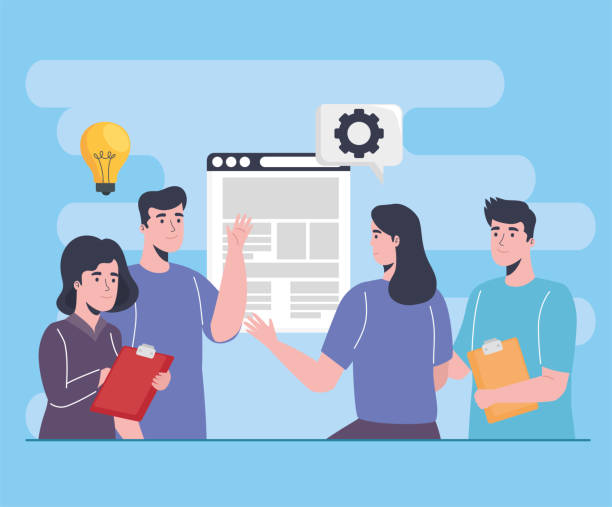
Managing multilingual content can be a major challenge, but with the correct selection and use of tools, this process becomes manageable and even simpler.
#Educational.
In the field of multilingual website design, choosing a Content Management System (CMS) that fully supports multilingual capabilities is the first crucial step.
Systems like WordPress with plugins such as WPML or Polylang, Drupal, Joomla, and even dedicated platforms like Contentful or Strapi, offer tools for organizing, translating, and publishing content in various languages.
In addition to CMS, translation tools play an important role in facilitating the localization process.
These tools are divided into two main categories: Machine Translation and Computer-Assisted Translation (CAT).
Machine translation, performed by artificial intelligence and advanced algorithms (such as Google Translate or DeepL), is suitable for large volumes of content or content that does not require exceptional accuracy.
However, for sensitive, marketing-related content, or anything that requires a specific tone and culture, this method alone is insufficient and often requires human editing.
CAT tools, such as MemoQ or Trados Studio, provide an environment for professional translators where they can utilize Translation Memories (TM) and Term Bases (TB).
Translation memories store sentences or segments of text that have been previously translated, preventing their re-translation and helping maintain consistency and reduce costs.
Term bases also store a list of industry-specific or brand-specific terms along with their equivalent translations to ensure accuracy and consistency across all translations.
These tools are especially essential for specialized and long-term projects in the field of multilingual website design.
Choosing the right tools not only helps improve translation quality but also significantly reduces the time and costs associated with multilingual content management.
Careful planning for the use of these tools is the key to success in large localization projects and helps make your website quickly and with high quality available in various languages.
Search Engine Optimization (SEO) for Multilingual Websites
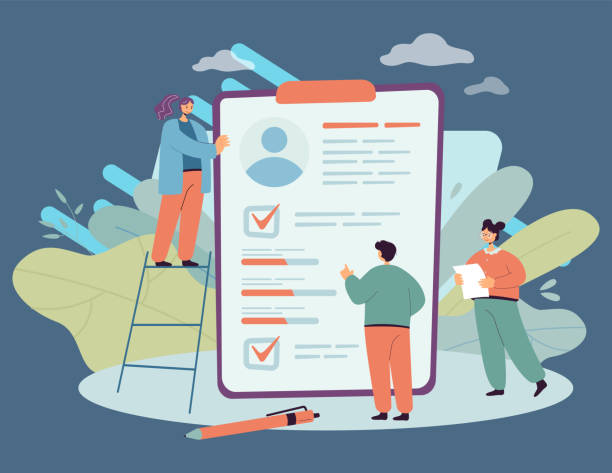
Search Engine Optimization (SEO) for multilingual website design goes beyond keyword translation and requires a comprehensive and specialized strategy.
#Technical.
The goal is to ensure that each language version of your website is discoverable and rankable by search engine algorithms in target markets, not just for human users.
This involves several key steps that must be carefully followed to achieve maximum visibility in search results for your website.
The first step is multilingual keyword research.
Keywords that are successful in one language do not necessarily perform well in another, as search behavior and phrases used differ across cultures.
You must use keyword research tools to find appropriate and highly-searched equivalents in each target language.
Also, attention to the URL structure, as mentioned earlier, is crucial for international SEO.
Using correctly configured country-code top-level domains (ccTLDs), subdomains, or subdirectories helps search engines serve content relevant to each geographical region to the appropriate users.
Another very important aspect is the correct use of hreflang tags.
These tags inform Google and other search engines which version of a page is suitable for which language and geographical region.
This prevents the “duplicate content” issue and ensures that users are always directed to the correct language version.
Without hreflang, search engines might consider similar pages as copies of each other, which can harm your ranking.
Furthermore, internal and external linking in each language version is also important.
Links should point to relevant pages in the same language, and efforts to acquire backlinks from authoritative websites in target markets should also be on the agenda.
Producing high-quality and localized content that meets the needs of local users plays a fundamental role in improving SEO rankings.
This comprehensive approach to SEO, ensures that your investment in multilingual website design leads to increased visibility and targeted traffic acquisition.
User Experience (UX) in Multilingual Website Design
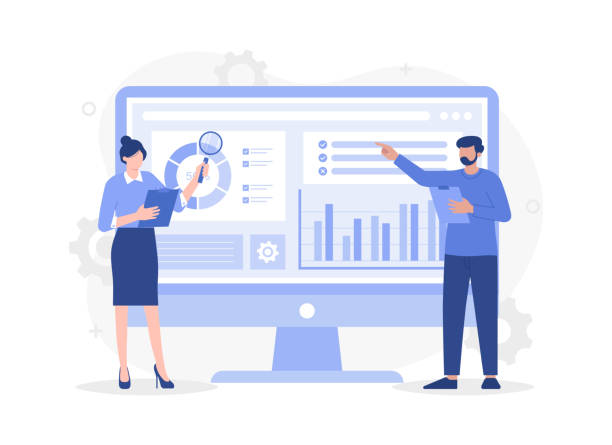
A successful multilingual website design is not limited to content translation; it must provide a flawless User Experience (UX) for all languages and cultures.
#EngagingContent #Entertaining.
UX in multilingual websites involves ensuring that users can easily find and select their desired language and that content is displayed in a manner appropriate for their culture.
Failure to pay attention to these issues can lead to user dissatisfaction and loss of potential customers.
One of the most important elements is the Language Switcher.
This option should be easily accessible and placed in well-known locations such as the header, footer, or sidebar.
Country flag icons, although common, may not always be the best option; because a flag does not represent a specific language (e.g., Spanish spoken in multiple countries).
The best approach is to use the full language name along with its ISO code (e.g., “English – EN” or “فارسی – FA”).
Additionally, text direction (RTL/LTR) is crucial for languages like Persian and Arabic, which are written from right to left.
All design elements, including layout, menus, images, and even button placement, must be adapted for this direction.
Ignoring this issue can lead to a messy and unusable website.
Also, compatibility with fonts and specific characters of each language is essential.
Some fonts may not support all characters of specific languages, leading to improper display or empty squares instead of letters.
Choosing fonts that have broad support for Unicode character sets is of high importance.
Adherence to localized UX design principles not only improves user experience but also enhances your brand’s credibility and professionalism.
Finally, user testing with native speakers in each language is highly recommended to discover any potential problems or misunderstandings.
This approach ensures that your multilingual website design effectively meets the needs of your diverse audience and converts them into loyal customers.
| UX Item | Description | Importance for Multilingual |
|---|---|---|
| Language Switcher | An element to change the site’s language. Must be clear and accessible. |
The most fundamental element for multilingual UX; flags alone should be avoided. |
| Text Direction (RTL/LTR) | Setting the direction of content (right-to-left or left-to-right). | Crucial for languages like Persian and Arabic; affects the entire page layout. |
| Font and Character Support | Ensuring correct display of letters and symbols in all languages. | Prevents corrupted text display; choose Unicode-friendly fonts. |
| Localization of Images and Videos | Adapting visual elements to local cultures. | Better communication with the audience, prevention of offense or cultural misunderstanding. |
Common Challenges and Solutions in Multilingual Website Design
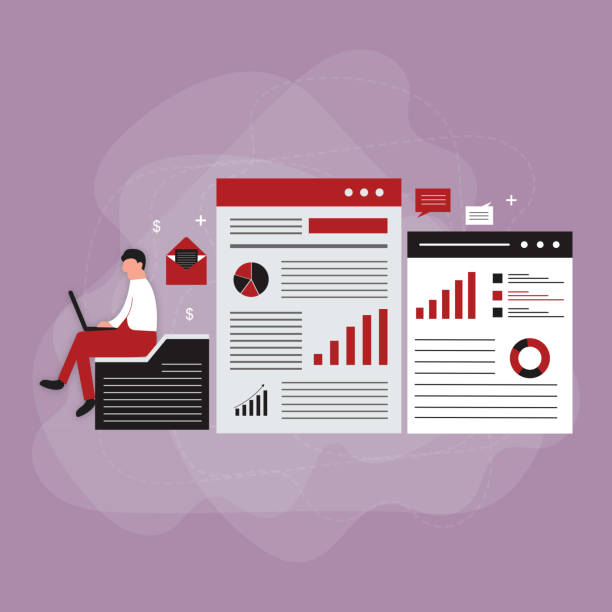
Implementing a multilingual website design, despite its numerous advantages, is not without challenges.
#News.
Addressing these challenges and finding appropriate solutions is a significant part of success on this path.
One of the most common problems is managing large volumes of content.
The solution to this problem is using a powerful CMS with multilingual capabilities, Computer-Assisted Translation (CAT) tools, and having an organized translation and localization team.
Dividing content into translatable modules and using translation memories can help reduce time and cost.
Another challenge is maintaining brand consistency and tone across all languages.
Mere translation might not accurately convey the brand’s original tone and message.
To overcome this problem, a comprehensive Tone of Voice Guide should be prepared for translators.
Additionally, hiring native translators who are familiar with your brand’s culture and values can significantly help maintain consistency.
Regular reviews and feedback from native users are also essential to ensure the accuracy and cultural appropriateness of the content.
Technical issues can also be challenging.
These include URL management, hreflang tags, and CSS/JavaScript issues for Right-to-Left (RTL) languages.
These issues require deep technical knowledge and thorough testing.
The solution to these problems is close collaboration between the development team and SEO specialists.
Using frameworks and libraries that adequately support RTL can simplify the design and development process.
Finally, website performance optimization for all language versions is also a significant challenge.
Differences in users’ geographical locations can cause slow loading times.
Using CDNs, compressing images and code, and optimizing the database are among the solutions that can help improve site speed.
With careful planning and attention to these challenges, a successful and sustainable multilingual website design can be created that meets the needs of global audiences.
Research shows that 80% of customers trust companies with a professional website more. Does your current website inspire this trust?
With RasaWeb’s corporate website design services, solve the problem of customer distrust and weak online image forever!
✅ Create a professional image and increase customer trust
✅ Attract more sales leads and grow your business
⚡ Get a free consultation now!
The Future of Multilingual Website Design and Emerging Trends

The world of the web is constantly evolving, and multilingual website design is no exception.
#Analytical.
Emerging trends in technology and user behavior are shaping the future of this field and creating new opportunities for engaging with global audiences.
One of the most important of these trends is the advancement of Artificial Intelligence (AI) in machine translation.
Deep learning algorithms have significantly improved translation accuracy and are capable of better understanding context and tone.
This can help reduce reliance on human translation for certain content sections and accelerate the localization process, although the human role remains crucial for sensitive and creative content.
Another trend is the growing importance of voice and conversational search.
With the increasing use of voice assistants like Siri, Google Assistant, and Alexa, optimizing content to respond to voice queries in different languages becomes essential.
This requires understanding how users phrase their voice searches and providing direct, concise answers in their language.
This approach provides new opportunities for multilingual website design to improve the user experience across more diverse platforms.
Furthermore, content personalization based on geographical location and language, extending beyond automatic browser language detection, is emerging.
By using location and behavioral data, websites can offer much more relevant and personalized content to users.
This could include displaying region-specific products, suggesting local services, or even changing visual design based on cultural preferences.
This level of personalization significantly enhances user engagement and enriches their experience.
Finally, the focus on global Accessibility is also increasing.
Multilingual websites must ensure they are usable for users with special needs across all languages.
This includes support for screen readers, video subtitles, and responsive design for various devices.
These trends indicate that multilingual website design is transforming into a smarter and more complex ecosystem that requires an analytical and forward-looking perspective.
The Importance of Testing and Feedback in Multilingual Website Design

After implementing and launching a multilingual website design, the work does not end.
#Guidance.
The stage of comprehensive testing and gathering feedback from native users is the most critical step to ensure the quality and effectiveness of the website across all languages.
Ignoring this stage can lead to serious problems in user experience, SEO, and even your brand’s credibility.
Testing should include several aspects.
First, Functional Testing for each language.
This includes checking links, forms, shopping carts (in e-commerce sites), and all interactive elements to ensure their correct functioning in each language version.
For example, are dates and currencies displayed correctly? Do forms send information correctly to the target language? Second, Content Testing.
This test should be performed by native translators or independent reviewers to ensure the accuracy, grammatical and spelling correctness, and, most importantly, the cultural appropriateness of the content.
The content should appear natural and fluid, not a dry, lifeless machine translation.
This includes reviewing titles, subtitles, descriptions, and even system error messages.
Third, User Experience (UX) Testing.
This part should be carried out by actual users from each target region.
They should be able to easily change the language, search for information, and perform their tasks on the site.
At this stage, attention should be paid to details such as how text is displayed in Right-to-Left (RTL) languages like Persian and Arabic, sufficient space for longer texts in some languages, and even the selection of culturally appropriate images and icons.
User testing helps you identify and resolve hidden problems that might have been overlooked in the initial design stages.
Feedback collection can be done through surveys, focus groups, and web analytics tools (such as Google Analytics).
Analyzing web traffic data, conversion rates for each language, and bounce rates can provide valuable insights into the performance of each language version.
By repeating this cycle of testing and improvement, you can gradually optimize your multilingual website design and provide an unparalleled online experience for your global audience.
Frequently Asked Questions
| Question | Answer |
|---|---|
| What is a multilingual website? | It is a website whose content is available to users in several different languages. |
| Why should we design a multilingual website? | To expand access to international audiences, increase website traffic, improve SEO in target markets, and provide a better user experience for non-Persian speaking users. |
| What are the main methods for implementing a multilingual website? | Using subdomains (e.g., en.mysite.com), using subdirectories (e.g., mysite.com/en/), and using separate domains for each language (e.g., mysite.com and mysite.de). |
| Which implementation method is better for SEO? | Generally, using subdirectories (language folders) is often recommended due to the transfer of main domain authority to other languages. |
| What is the Hreflang tag and what is its use? | It is an HTML tag or HTTP Header that informs search engines which version of the page is suitable for which language or geographical region. This tag prevents duplicate content and improves SEO. |
| How is a Language Switcher designed? | Usually by using a dropdown menu, button, or flag in the site’s header or footer, which allows the user to select their desired language. |
| Is automatic (machine) translation suitable for a multilingual website? | No, machine translation usually has low quality and many errors that can harm the site’s credibility. Human translation or a hybrid of human translation and machine editing is recommended. |
| What are the most important SEO tips in multilingual website design? | Correct use of Hreflang tags, having an appropriate URL structure for each language, translating titles and meta descriptions, translating main content, internal linking between related language versions. |
| Should all website content be translated? | It depends on the strategy. Usually, the main and important content of the site should be translated. Less important sections or blogs may not require full translation. |
| What are the main challenges in multilingual website design? | Managing content in different languages, translation costs, technical issues related to URLs and language tags, template compatibility with Right-to-Left (RTL) languages like Persian and Arabic, and managing multilingual SEO. |
And other advertising services of RasaWeb Advertising Agency:
Smart Google Ads: Professional optimization for online growth using marketing automation.
Smart SEO: Revolutionize user engagement with the help of real data.
Smart Advertising Campaign: Professional optimization for user engagement using precise audience targeting.
Smart Custom Software: An innovative platform for improving digital branding with attractive UI design.
Smart Advertising Campaign: A new service to increase website traffic through key page optimization.
And over hundreds of other services in internet advertising, advertising consultation, and organizational solutions.
Internet Advertising | Advertising Strategy | Advertorial
Resources
Advanced Multilingual Website Design: A Complete GuideWeb Optimization for Global AudiencesThe Importance of SEO in Multilingual WebsitesLatest Web Globalization Trends
? To soar in the digital world and reach more customers, RasaWeb Afarin Digital Marketing Agency is by your side, offering creative and results-driven solutions. From custom website design and SEO optimization to professional social media management, we give your business a powerful identity that resonates with your audience. Contact us and transform the future of your business.
📍 Tehran, Mirdamad Street, next to Bank Markazi, Southern Kazeroon Alley, Ramin Alley, No. 6




